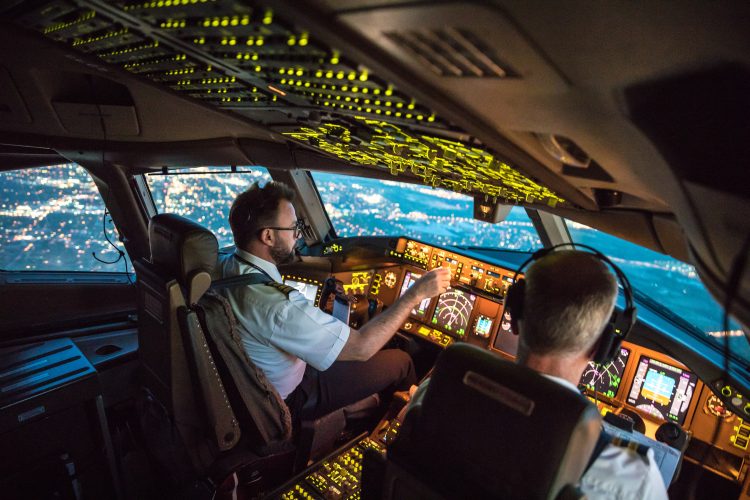Digital transformation to better serve airport passengers: A case study of Shenzhen Airport
- Like
- Digg
- Del
- Tumblr
- VKontakte
- Buffer
- Love This
- Odnoklassniki
- Meneame
- Blogger
- Amazon
- Yahoo Mail
- Gmail
- AOL
- Newsvine
- HackerNews
- Evernote
- MySpace
- Mail.ru
- Viadeo
- Line
- Comments
- Yummly
- SMS
- Viber
- Telegram
- Subscribe
- Skype
- Facebook Messenger
- Kakao
- LiveJournal
- Yammer
- Edgar
- Fintel
- Mix
- Instapaper
- Copy Link
Posted: 1 September 2021 | Huawei | No comments yet
Huawei explains how digital transformation helps airports to reduce flight delays, enable smoother travel and improve the passenger experience.


Having greatly improved punctuality and enhanced safety in recent years, Shenzhen Bao’an International Airport (SZX) has become a benchmark for industrial digital transformation. The airport’s management is now striving to consolidate the foundation that supports its digital transformation by accumulating digital platform assets and attracting partners to join the ecosystem. This helps the airport reduce flight delays, ensure flight punctuality, provide better services, and enable smoother, easier travel.
Using digital technology to enhance passengers’ experience
Over the past two years, Shenzhen Airport has had significantly fewer delays, leading to improved punctuality. In 2019, the on-time release rate exceeded 87 per cent, and this indicator remained stable at over 80 per cent for 15 consecutive months for the first time in the airport’s history. Through an intelligent, comprehensive operations control system — including the Airport Collaborative Decision Making System (A-CDM) and Intelligent Operation Centre (IOC) — Shenzhen Airport has implemented airport-wide situational awareness, stand arrival prediction, emergency warnings, collaborative operations, and intelligent decision-making, with shortened aircraft turnaround times. All these developments have only been made possible through the adoption of digital airport methods and advanced technologies.
Four-in-one airports
Rewind to November 5, 2019, when the National Civil Aviation Conference outlined the four critical periods that the civil aviation industry would go through: peak planning and construction; high operational safety; the critical transformation period; and, finally, the world-leading period. During these times, the construction of ‘four-in-one airports’ — airports that are safe, green, smart, and passenger-oriented speeds up high-quality industry development.
Going further, the Outline of Action for the Construction of four-in-one Airports (2020-2035) states that smart airports must feature Internet of Things (IoT)-based production elements, data sharing, efficient collaboration, and intelligent operations — all of which can be built through smart methods.
Then on January 6, 2020, the Civil Aviation Administration of China (CAAC) held a work conference, concluding that the civil aviation industry should pursue development and innovation and apply technologies — such big data, AI, and blockchain — to improve its governance capabilities.
Clearly, digitalisation is critical for airports to improve competitiveness, and digital transformation is therefore at the very top of the agenda for airports. However, while pursuing digital transformation, airports must address multiple issues.
Increased passenger volume called for more efficient and seamless services
The total air transport turnover volume in the Chinese Mainland ranks fifth globally, following the US, Germany, the UK, and Japan, according to statistics from the International Civil Aviation Organization (ICAO). This ranking improves to number two when the turnover volume of Hong Kong (China), Macao (China), and Taiwan (China) is taken into account. Increasing volume inevitably leads to serious challenges for the civil aviation industry in China, in terms of safety, operations, and services.
The safety situation is becoming more and more complicated. Put simply, safety risks increase as business volumes do. Airport safety is ensured through inspection. Although video surveillance systems are widely deployed at airports, airport staff still need to manually identify exceptions by watching many videos.
All these developments have only been made possible through the adoption of digital airport methods and advanced technologies”
A lack of collaboration between isolated industry organisations leads to low efficiency. The separate mechanisms of airlines and airports build strong barriers between different organisations, hindering the industry’s overall information and communications technology (ICT)-based development. For example, increasingly complex flight support requires efficient collaboration between Air Traffic Control (ATC) authorities, airlines, airports, and other support units. However, these organisations are often unable to find each other’s support processes because the data is scattered. The result is an inability to completely deal with flight punctuality issues.
The public is looking for better services and an improved experience. Just as the internet has habituated us to hyper-customised experiences, passengers now also expect a wider range of services attuned to their precise needs. Yet, at most airports, passengers still have to queue in long lines, go through complex security checks, and sometimes even have to rush to their gate to board the plane as a result. And since time inside airports is often scarce, passengers don’t always make the best decisions. As such, it’s challenging for airports to exceed passenger expectations.
China is transitioning from a large civil aviation country to a strong one. Faced with significant changes, the civil aviation industry will use technologies — particularly those that capitalise on data — to cope with safety, efficiency, and service issues.


Transforming digitally with customised solutions
Digital transformation varies for different airports, depending on their own development phases and requirements. Solution providers should appreciate that the digital infrastructure construction of airports varies and offer customised solutions to meet these differing needs.
In China, airports can typically be classified into four types, each confronted with different digital transformation challenges.
Type 1: Ultra-large airports (90 million passengers or more), large airports (60–90 million passengers), and medium airports (30–50 million passengers). As aviation hubs, such airports need to tackle multiple problems during operations, such as limited resources, many safety requirements, and collaboration difficulties. However, they can streamline data, converge businesses, and increase efficiency through digital transformation, at the same time demonstrating the value of the airport as an overall operations co-ordination platform. Although hub airports have similar requirements, their processes for promoting digital transformation are vastly different, because their status of digital infrastructure construction is different.
Shenzhen Airport, for instance, went back to the drawing board and conceived its digital blueprint from scratch. Despite weak legacy ICT infrastructure and outdated technologies, it planned to streamline business processes and implement its digital platform architecture by upgrading and reconstructing existing infrastructure. The airport integrates various technologies, ensuring a complete digital platform architecture can be implemented.
The safety situation is becoming more and more complicated. Put simply, safety risks increase as business volumes do”
Indeed, after years of ICT development, many airports in Tier 1 cities have built digital infrastructure that’s more robust than Shenzhen Airport’s, and they have also established capable teams for information technology (IT) management, development, and operations and maintenance (O&M). With solid operating performance and sufficient funds, the decision-makers for these airports tend to stay in their comfort zone and pursue digital transformation through incremental improvements, rather than via total reconstruction or breakthroughs.
Type 2: Small airports (10–20 million passengers). Generally, this type of airport has a low-level of informatisation, IT teams that are relatively weak, and limited funds. Executives at these airports often focus on motivating their teams, improving morale, and making their airports leaders at their level.
Type 3: Newly built, reconstructed, and expanded airports. Most of these airports focus on reconstruction and expansion. They want to adopt the very latest technologies during the construction of major projects. These airports require a clear blueprint and abundant funds to facilitate digital transformation.
Once these kinds of airports have successfully endured the long, early planning stage — overcoming complex engineering procedures and difficulties in terms of streamlining businesses — it’s easy for them to implement a digital transformation platform architecture. Overall planning and design is required during the initial stage, to ensure that all kinds of smart scenario-specific solutions and data services are available during low-level design (LLD) and bidding stages.
Type 4: Airport groups. The management and control needs of airport groups can be a catalyst for group-wide digital transformation. For example, the Capital Airport Holding Company (CAH) has built a group-level cloud platform for smart airport clusters. It has also published data standards and shared data and application specifications, related to production and operation services, with its trunk airports, asking them to solve data-sharing issues at feeder airports.
Airport groups also need to foster such collaboration between trunk airports and feeder airports, because of a lack of ATC, security check, and IT talent. Such a shortage is especially apparent at feeder and general aviation airports, which need to be remotely enabled by trunk airports.
Enabling airport digital transportation
Instead of exploring what successful digital transformation is, airport managers should focus on determining the objectives they want to achieve and work towards them. They should bear in mind that informatisation isn’t the fundamental goal of digital transformation. Instead, an airport should apply digital methods to improve its capabilities to gain insight into passengers’ needs and, ultimately, better serve them. To achieve that, informatisation transformation technologies must be directly linked to airport business scenarios. Solutions can only be applied to business scenarios through full cooperation between airports and technical vendors.
From indicator system to business processes
Although airport digital transformation paths vary depending on an airport’s type, they all share a similar overall major process — including indicator system determination, business process streamlining, data collection, standards finalisation, and platform setup.
The business indicator system must be determined based on customer benefits. Airlines are the most important customers that airports serve directly, so airports need to build a complete digital architecture that spans across the boundaries of authorities and organisations, to create benefits for airlines. Airlines want to improve their competitiveness while reducing their operational costs. Competitiveness is boosted through improved flight punctuality, better assurance for flight safety, more efficient services, more benefits for members, and more passenger-friendly and convenient travel experiences. Operational costs are reduced through efficient usage of support resources, reduced taxiing time, and shortest-possible waiting time on runways. This indicator system also evaluates the capabilities of airports to serve airlines.
Business processes related to aircraft, passengers, baggage, and commercial services are streamlined according to these indicators, involving various departments — such as ATC authorities, airports, ground service companies, airport-stationed organisations, and merchants. Each of these elements functions as a single node in a flight support or passenger service process. As such, the entire process should be streamlined and coordinated to benefit airlines. Integrated and accurate data plays a key role in fulfilling these indicators, as well as streamlining and guiding business processes. Data can be abstracted from existing systems via connection, collected manually or using technical methods, and calculated based on fixed rules.
An airport should apply digital methods to improve its capabilities to gain insight into passengers’ needs and, ultimately, better serve them”
A digital platform can be built with indicators, processes, and data. Its basic architecture consists of the device and infrastructure layer for data collection and transmission, as well as the platform layer for data convergence, cleansing, governance, and business convergence. The platform layer — also known as the capability layer — includes big data, video analysis, artificial intelligence (AI), Integrated Communications Platform (ICP), Geographic Information System (GIS), and integration enablement.
Assets and capabilities that are accumulated on the platform foster the development of applications that are used to process business logic, as well as display data and businesses. A solid platform enables applications to satisfy customer requirements, with minimal costs and maximum efficiency. Applications running on the platform include the existing informatisation achievements of process-related units, as well as new applications that are constantly being created with the expansion of transformation and business scenarios. Rather than disrupting existing achievements, digital transformation maximises the value of existing investments and ensures future investments will have even greater value.
Inevitably, digital transformation will remove barriers between organisations, reconstructing the value chain. Digital transformation aims to break operational data silos, streamline data and business processes, reshape the business chain, and ultimately improve customer benefits. The digital platform architecture can maximise the value of digital assets on application platforms and minimise future investment, facilitating easier and more convenient application system construction. Meanwhile, data assets generated during the development of new applications will be accumulated on the platform, improving the platform’s competencies. Digital transformation achievements will also be continuously consolidated in the future.
As a benchmark for industrial digital transformation, Shenzhen Airport needs to consolidate its foundation, by accumulating digital platform assets and attracting partners to join the industry ecosystem, creating greater value for the industry overall. A powerful digital platform should support the digital transformation of China’s civil aviation industry, helping airports reduce flight delays, ensure flight punctuality, provide more refined services, and enable smoother mobility.
Huawei will host Huawei Connect 2021 online from September 23 to October 31, complete with live broadcasts, digital exhibitions, and the opportunity to connect with industry experts. The theme of this year’s event is Dive into Digital. We’re going to dive deep into the practical application of technologies like cloud, AI, and 5G in all industries, and how they can make organizations of all shapes and sizes more efficient, more versatile, and ultimately more resilient as we move towards economic recovery.
For more information, please contact our local team or check out here.


















